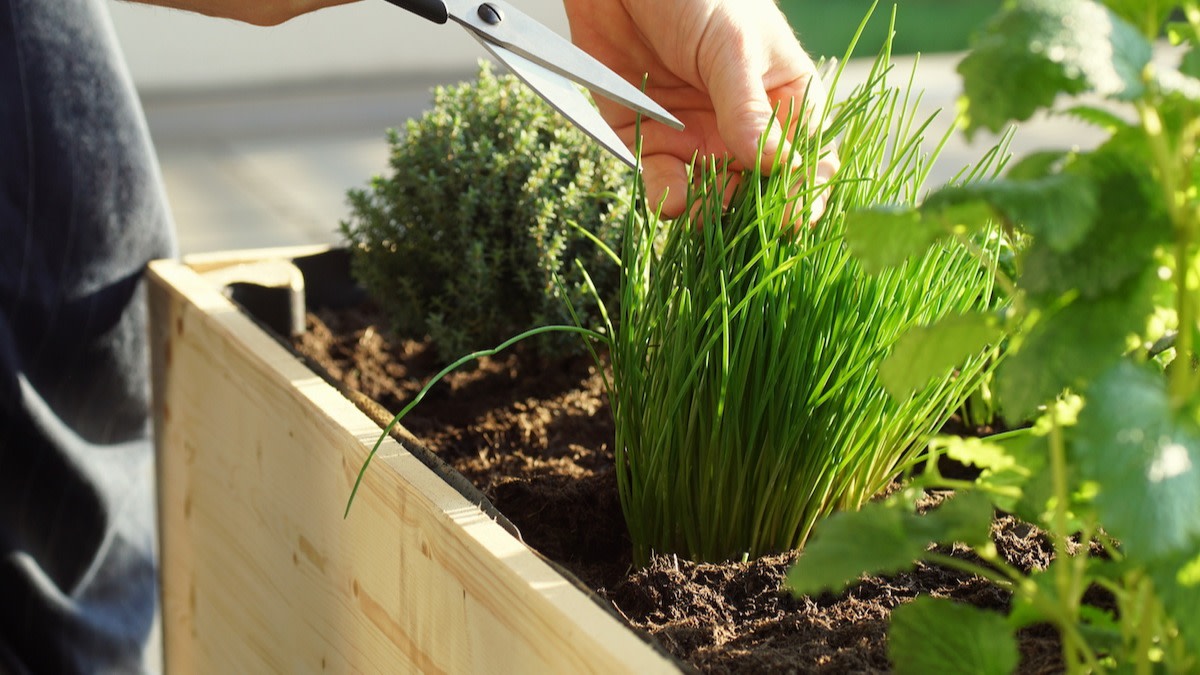How to Grow and Harvest Chives in Your Garden
Written by MasterClass
Last updated: Jun 7, 2021 • 3 min read
If you’re looking for a new culinary herb to grow on your sunny windowsill or in your herb garden, look no further than chives. Chives are an easy-to-grow plant and a great choice for beginners. Not only can they survive cold weather and dry soil, but they’re also rewarding for gardeners, producing both edible leaves and beautiful, edible purple flowers every year.
Learn From the Best
What Are Chives?
Chives (Allium schoenoprasum) are a thin, grass-like member of the allium family, which also includes garlic, scallions, shallots, and leeks. With a subtle oniony flavor, chives are one of the most widely used garnishes in the world and can be found in most grocery stores and farmer’s markets. Chive plants also produce edible purple flowers known as chive blossoms, which are typically trimmed during harvest.
When to Plant Chives
Chive plants are a cool-season crop, thriving in temperatures between 40 degrees and 85 degrees Fahrenheit (during the spring and early summer growing season in most regions of the United States). Most gardeners plant chives during the early spring, once the soil is ready to be worked, for late spring and early summer harvests.
If your area has cold winters and mild summers, plant chives four weeks before the last frost date, or start them indoors to get a head-start on the season. If your area has very hot summers and mild winters, plant chives in late summer just as the weather is starting to cool.
How to Plant Chives
Once your garden soil can be worked, it’s time to sow chive seeds.
- 1. Choose and prepare the planting bed. Choose a spot with full sun or partial shade. Chives are sensitive to overly moist conditions, so well-draining soil is a must. If your soil doesn’t have a lot of organic matter, till in aged compost or manure to give your chives the nutrients they need.
- 2. Sow the seeds. Chive seeds should be planted a half-inch deep; they need darkness to germinate properly. If planting in an outdoor garden bed, sow seeds two inches apart, in rows that are eight inches apart. If planting for indoor growth, sow seeds in a pot at least six inches in diameter.
- 3. Thin. Two to three weeks after planting, chives should start to sprout. Once the seedlings are two inches tall, thin them so that each plant has at least four inches of separation in every direction.
How to Care for Chives
Once chives are established, they are very hardy and low-maintenance, requiring only basic care:
- Give chives moderate but consistent water. While growing young chives plants, give them moderate waterings every week to help them get established. Once chives are mature, they can tolerate dry soil. When in doubt, look at the tips of your chives’ leaves—thirsty plants will have leaf tips that look brown and papery.
- Deadhead chives to prevent spreading. If you planted your chives in a particular spot and don’t want them spreading throughout your garden, use a method called “deadheading” in which you remove flowers early using garden shears. This will prevent your chives from spreading seeds all over your garden beds. Remember, don’t throw away the flowers—they’re edible!
- Mulch occasionally. Chives bulbs grow just beneath the soil surface, so if you start to see the bulbs emerging, mulch around the plants with compost or manure to cover them up and give them a healthy dose of nutrients.
- Divide clumps every few years. To avoid overcrowding, divide up large clumps of chives every two to three years, separating the plant into clumps of two to three bulbs. Divisions can be replanted.
How to Harvest Chives
Harvesting chives is easy and straightforward. They can be harvested any time after the leaves have grown to about six inches tall.
If harvesting the leaves, starting with the outer leaves first, cutting leaves about two inches from the base of the plant until you have the amount you need. If harvesting chive flowers, snip flowers at the top of the stalk. Since chives are a perennial herb (meaning the plant will last throughout the years rather than dying every winter), harvest in whatever quantities you need and leave the plant to continue growing.
Learn More
Grow your own food with Ron Finley, the self-described "Gangster Gardener." Get the MasterClass Annual Membership and learn how to cultivate fresh herbs and vegetables, keep your house plants alive, and use compost to make your community - and the world - a better place.
